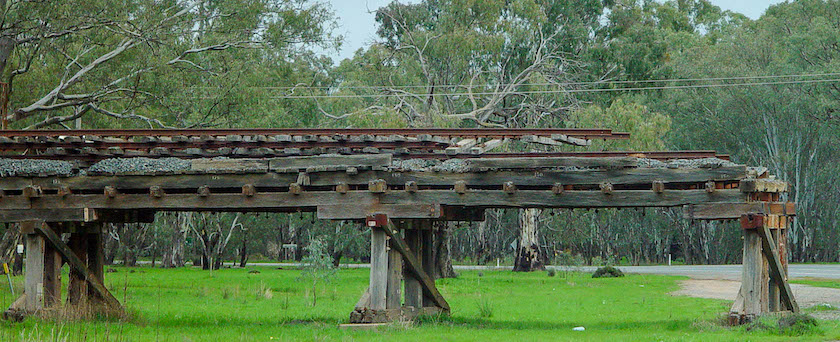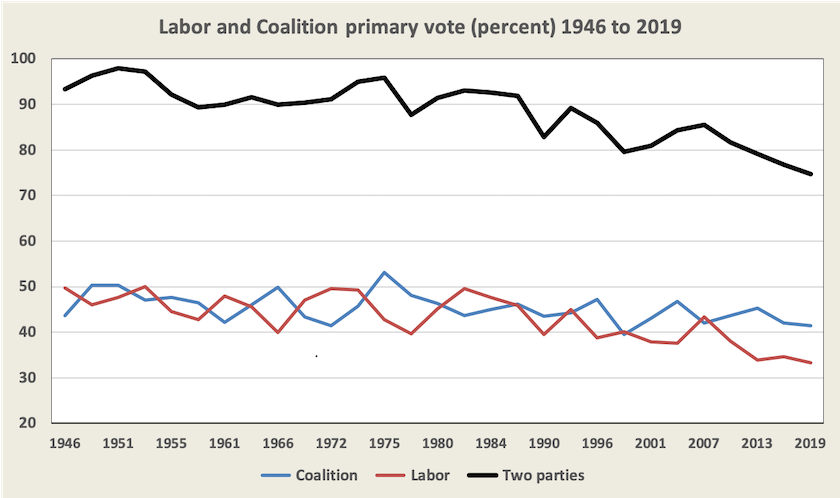Polls and surveys
IPSOS on infrastructure

We think our infrastructure may need upgrading
IPSOS reports on a study in 28 countries, including Australia, on the public’s attitude to infrastructure investment. Australians, in line with respondents in other countries, believe that in assessing infrastructure proposals “their impact on the environment should be more of a priority than their impact on the economy”. Australians also believe that not enough is being done to meet the nation’s infrastructure needs: Environmental impact is seen as critical to infrastructure planning.
Roy Morgan – Labor maintains its lead
William Bowe’s Poll Bludger reports on a Roy Morgan poll, conducted between October 2 and October 9. Labor’s support in primary vote is 36.0 percent (33.3 percent in the 2019 election); the Coalition’s is at 37.5 percent (41.4 percent in 2019). Roy Morgan calculates that this indicates a 53:47 two-party lead for Labor, and a swing to the Coalition since its previous poll, but we should be cautious in interpreting anything beyond the primary votes.
It is revealing that in this poll, as in similar surveys, the question assumes a trade-off between “economic” and “environmental” goals, as if “the economy” is something separate from the ecological systems that sustain it.
We’d like the federation to work better
The McKinnon Prize reports on an Ipsos poll assessing Australians’ views on National Cabinet: Federation fault lines exposed by pandemic crisis.
It has received a fair amount of media attention, but the press release (linked above) is hard to reconcile with the detailed poll results. For example the press release states that 81 percent of people in Western Australia are critical of border closures and travel bans, but this is not shown in the detailed results, which are about quite different questions. In fact the detailed results reveal that only 11 percent of people in Western Australia disapproved of the way the Commonwealth and the states have collaborated on border closures, compared with 32 percent of people in New South Wales. (But hasn’t the fraught relationship between the Commonwealth and Western Australia contrasted with the comparatively good relationship between the Commonwealth and New South Wales?)
These results also go against the general finding in other polls that the Western Australian Government continues to find high support for the way it handled the crisis.
One finding in the poll is that “44 per cent of metropolitan respondents voted for major parties, compared with 32 per cent of regional respondents”. (Presumably “regional” means regions outside the capital cities. And presumably “voted for” relates to voting intention, not actual votes.)
There is indeed a long-term drift away in support for Labor, Liberal and the National parties: see the graph below showing election outcomes since 1946, the first election contested by the Liberal Party. Although there is credible evidence that this movement may be accelerating, the idea that it has plummeted, from 75 percent at the 2019 election to somewhere below 44 percent now, defies imagination. The poll does identify 28 percent of voters as “swing voters”, which may explain some of the difference. But another table in the poll results is even harder to reconcile, because it shows the major party vote is highest in New South Wales at 32 percent, and lowest in Western Australia at 9 percent, but mathematically these cannot reconcile with the national figures.

It all looks like poor presentation of a poll with some interesting data. I have included the above links because some people may be able to glean some meaning from them.